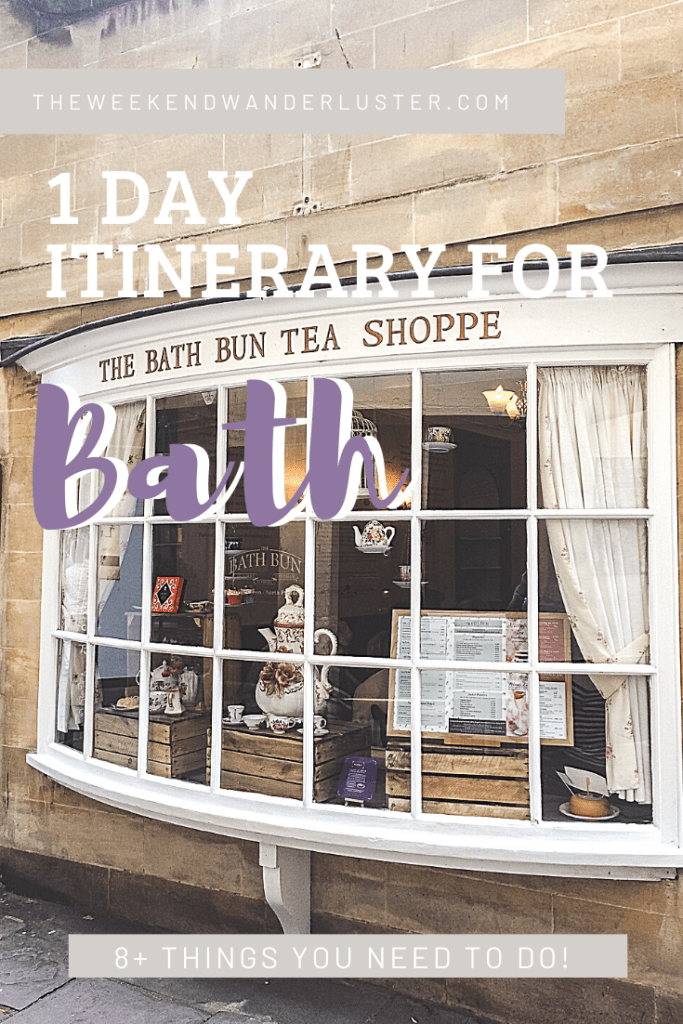The Ultimate Guide For A Day in Bath, England
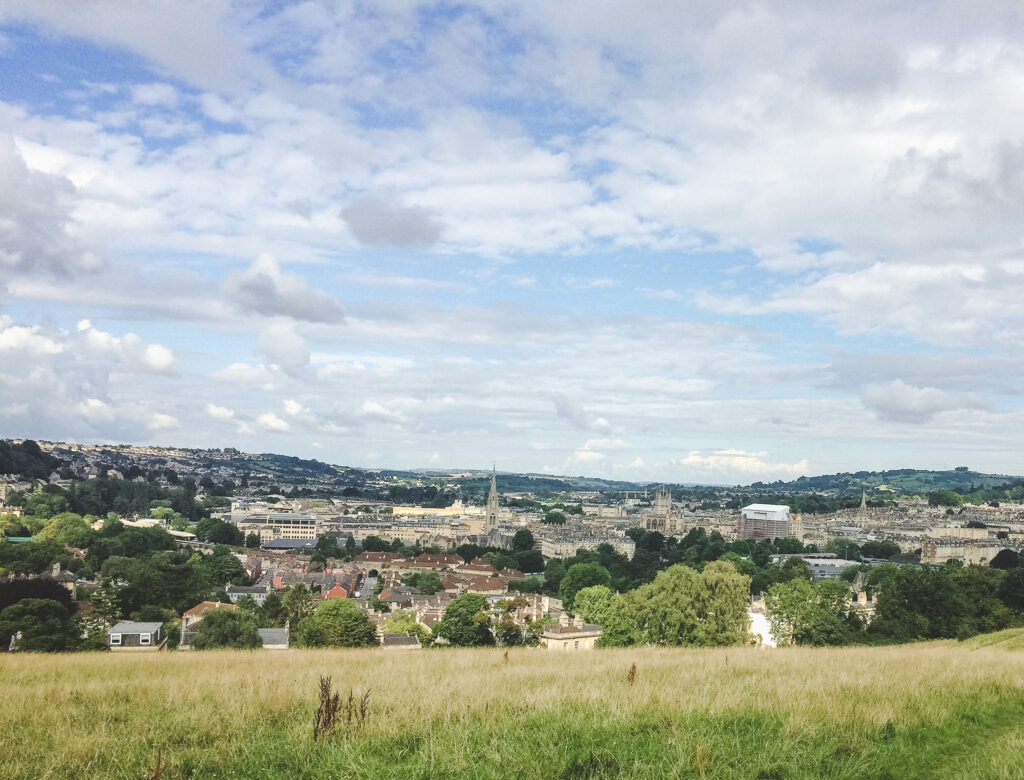
Bath is one of the most quaint and charming cities I’ve had the pleasure of visiting. Even with only 24 hours in Bath, England, there’s so much you can do! It’s not a big city, but was named a UNESCO World Heritage Site in 1987 for the density of its historical and architectural wonders.
Although, it was bombed in 1942 during the “Bath Blitz” (which targeted the city for its cultural rather than military value), many of its buildings survived. Today, Bath is a perfect city to spend 24 hours exploring!
Tucked cozily in the rolling hills of southwest England, strolling through Bath is like visiting an open-air museum. Walking through the sweeping crescents of Bath leaves you in awe. Between the Roman Baths complex and Jane Austen Centre, Bath’s Georgian architecture brings history to life.
Here’s the ultimate guide to spending 24 hours in Bath, England!
Where to Stay in Bath, England

Limpley Stoke is a delightful English village that makes you feel as if you’re in the countryside. Since it’s only a 10-minute drive (or 25-minute bus ride) from the city centre, it’s the perfect location to spend the night.
The Best Western Limpley Stoke Hotel is an 18th Century country house with extensive gardens and elegant rooms. It was originally founded during the reign of King James I. Today, the hotel offers modern rooms that still maintain their charm. It allows you to be within easy reach of the city while also enjoying its quiet location.
Note when choosing hotels – many within Bath itself can be quite expensive during summer peak periods. There are also not many hostels, so staying just outside may be one of the more affordable options.
Things to See During 24 Hours in Bath, England
1. The Roman Baths
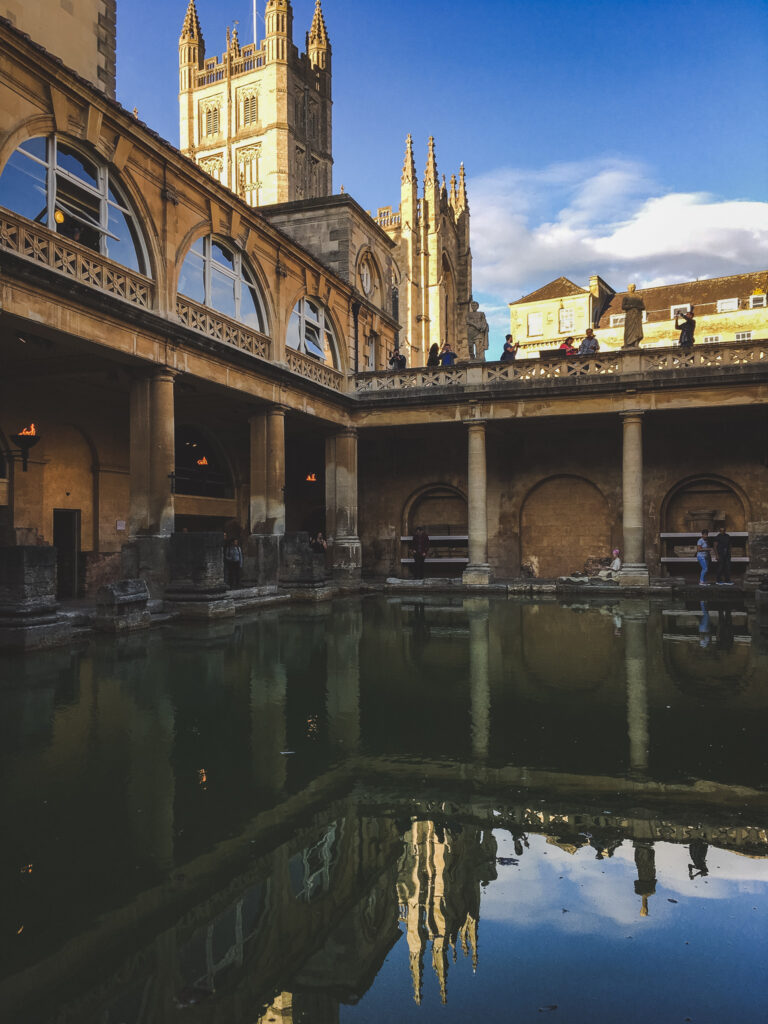
Firstly, the Roman Baths are definitely the highlight of Bath and one of the UK’s most popular tourist attractions. The city was originally established as Aquae Sulis by the Romans in the 1st century. It was named for its thermal springs and temple to the Roman healing goddess Sulis-Minerva. The spa became one of the finest facilities of the ancient world and remained that way into Georgian society.
The bathhouse complex was built above Bath’s hot springs. The heart of this is the Great Bath – a pool filled geo-thermally heated water from the ‘Sacred Spring’. The bath would’ve originally been covered by a high vaulted roof, but it’s now open-air. 1.5 million litres of hot water still pour into the pool every day.
If you only have one day in Bath, these ruins transport you through history and must be your first stop. They have excellent museum displays with plenty to learn about Roman society in England. However, since many tours stop here, it’s best to arrive early!
2. Bath Abbey
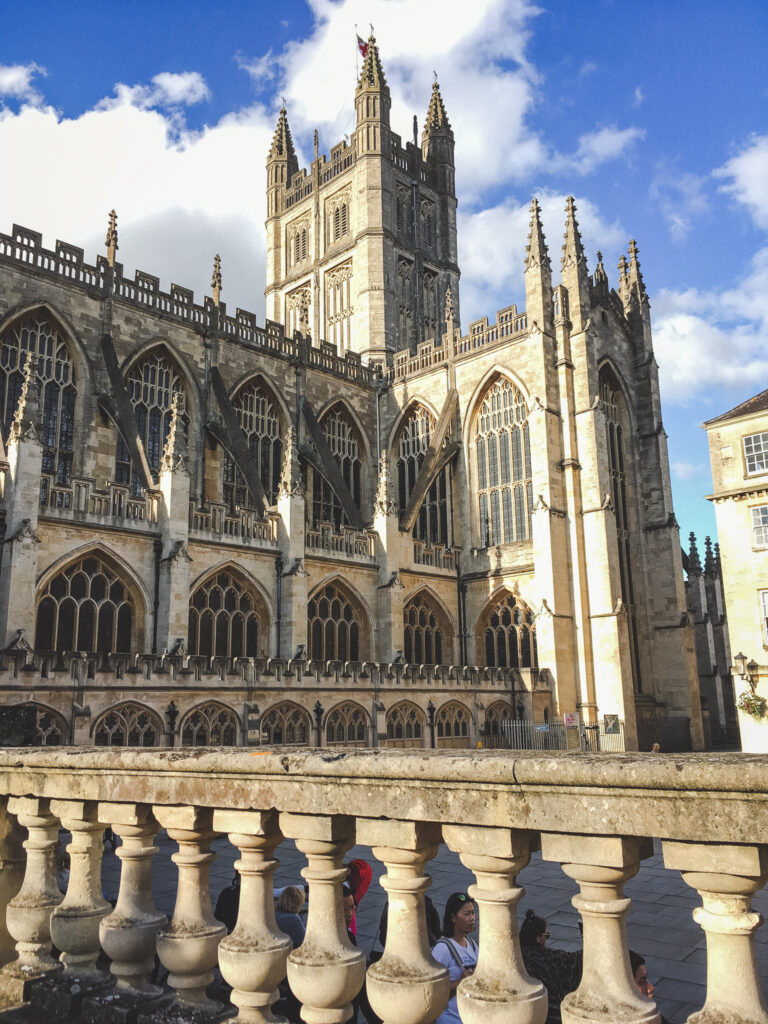
Conveniently located next to the Roman Baths, Bath Abbey is also essential to your visit to Bath. The former Benedictine monastery is home to beautiful stained glass windows. Bath Abbey was built between 1499 and 1616, making it the last great medieval church raised in England. It was later restored in the 1860s by Sir George Gilbert Scott.
As always, a highlight of any historic church is the view from the top of the tower. Unfortunately, there’s no getting out of the 212 steps up, but the view of the city is worth the effort!
3. Bath Skyline Walk

One of the best things about Bath is its setting within the greenery of Somerset County. The 1.5 hour long Bath Skyline Walk begins at a quiet path that winds its way along the Kennet and Avon Canal. The path lets you take in wonderful views of the tree-lined canal and watch the houseboats float in the water.
From the canal, you’ll carry on to the meadows of Bathwick Fields, where you’ll be rewarded with a stunning vista of the city. On your way back you’ll be taken through grand streets and public gardens. Therefore, there’s no better way than this 4.8km walk to take in all of what makes the city so special!
4. Royal Crescent
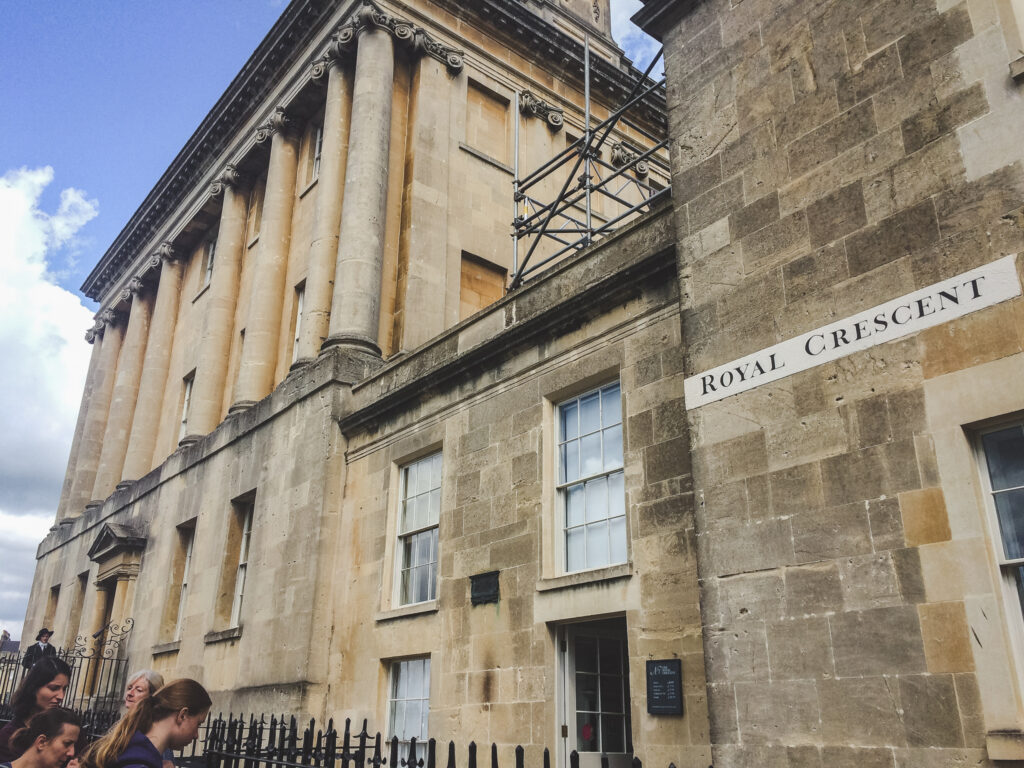
No trip to Bath would be complete without a visit to the grand Royal Crescent. Designed by John Wood the Younger (constructed 1767-1775) is this semi-circular row of thirty terraced houses overlooking Royal Victoria Park. The first house, No. 1 Royal Crescent, is home to a museum decked out in the elegant Georgian style, with authentic carpets, portraits, furniture, wallpapers, and fabrics.
The Royal Crescent is considered one of the greatest pieces of Georgian architecture in the UK. In those days, No. 1 was a luxury place for aristocrats to stay while partaking in Bath’d social scene. The houses appear perfectly symmetrical from the outside, but the owners were allowed to change the interiors. So no two houses are quite the same!
5. The Circus

The Circus is another 18th-century architectural masterpiece to visit during your 24 hours in Bath. It’s located just east of the Royal Crescent and was designed by John Wood the Elder (constructed 1754 – 1768). It’s said to have been inspired by the Colosseum in Rome.
The 33 mansions form a circle that has almost the same diameter as Stonehenge. Wood believed that Bath had been a centre of druid activity in the Neolithic Period and Bronze Age and wanted to represent this. Another story is that the Circus is meant to represent the sun, while the Royal Crescent is the moon. Whichever story you prefer, this historic row of townhouses makes for a pleasant stop exploring the city!
6. The Jane Austen Centre
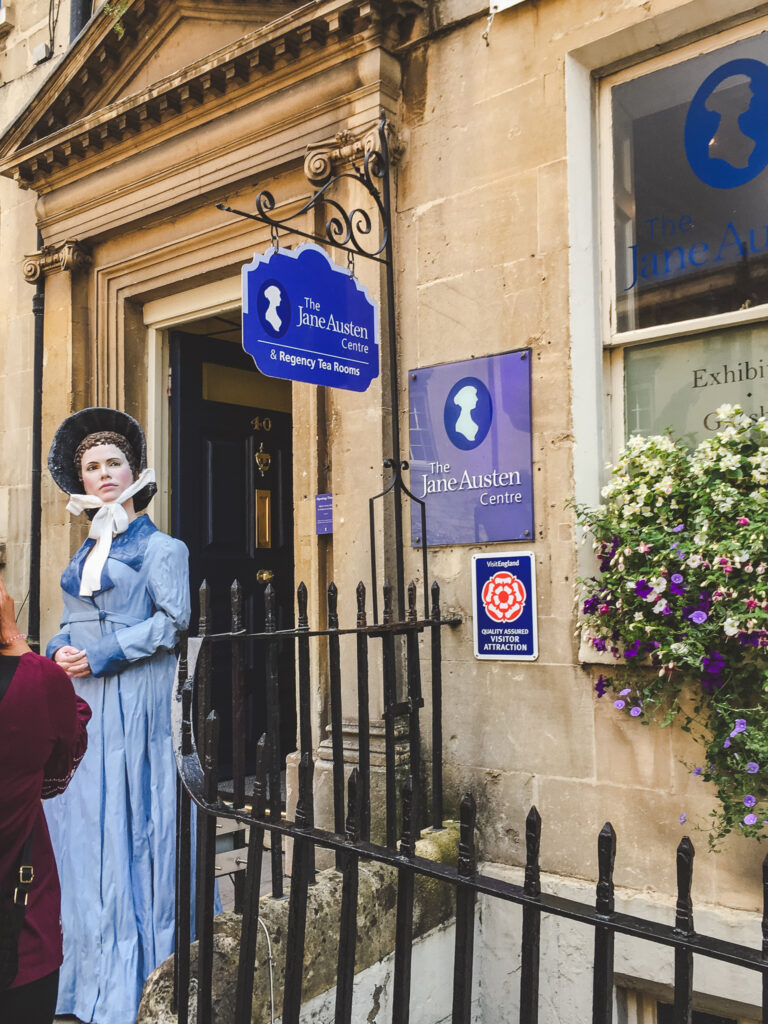
For any Pride & Prejudice fans, visiting the Jane Austen Centre is a must! Even those that don’t enjoy her literature will appreciate the collection of displays and information of the life and work of this much-loved author. The Centre offers visitors the chance to pose her figure or enjoy “Tea with Mr. Darcy” at the Centre’s Regency-style tea rooms.
The exhibitions explore the effect that living in the Georgian city had on Austen’s life and writing. Interestingly, she only lived in Bath for five years (1801 – 1806), but she remained a regular part of the city’s social scene. The Centre also organizes the annual Jane Austen Festival, as well as walking tours of the city with an Austen theme.
7. Afternoon Tea
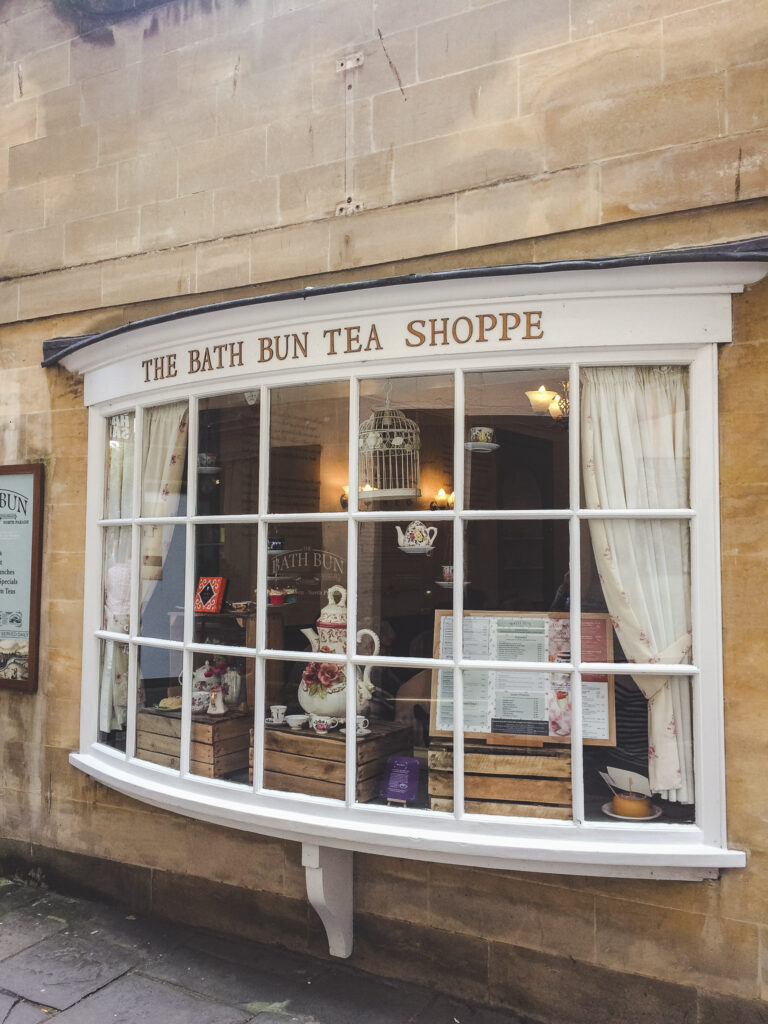
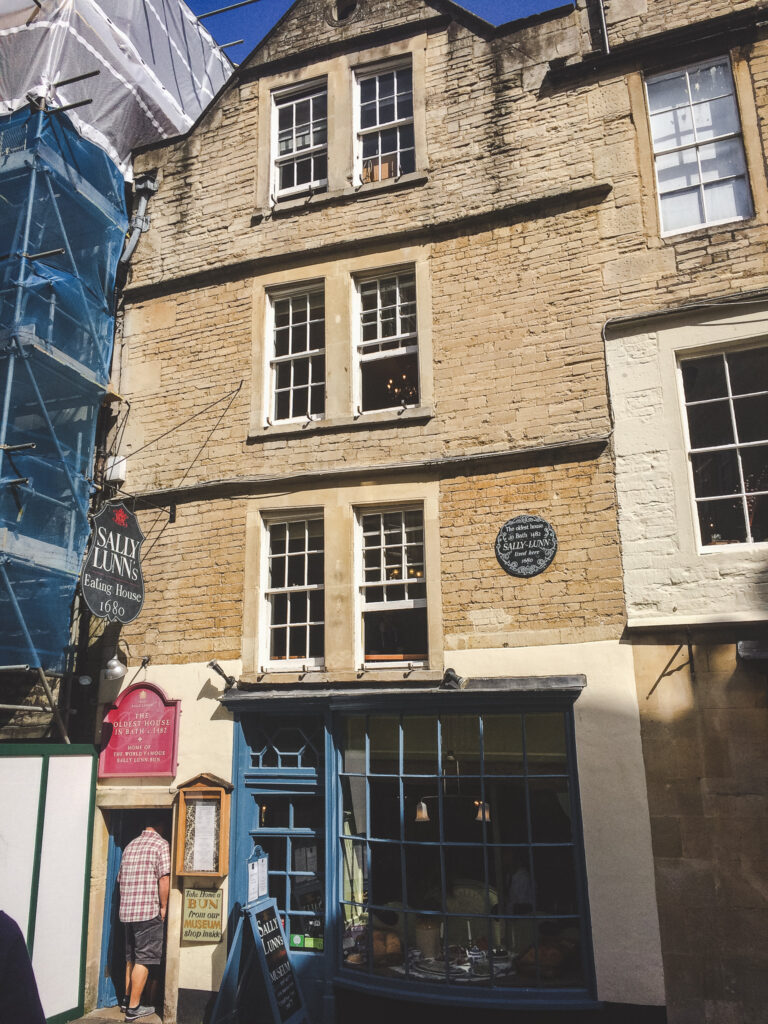

Afternoon tea in Bath is an absolute MUST. There’s no place more quintessential and quaint to enjoy a traditional tea and try one of Bath’s famous delicacies – the Bath Bun. There are two highly recommended tearooms across the street from each other. With only 24 hours in Bath, England, you may not be able to try both, but either one is sure to please!
Sally Lunn’s is the home of the “Sally Lunn Bun” is the oldest house in Bath. It features a kitchen museum reflecting its Roman, Saxon and medieval heritage.
The Bath Bun Tea Shoppe is also in the heart of Bath and is “steeped” in history. It’s a must-visit for anyone wanting to experience this setting in the city. We decided to go here and had a wonderful time enjoying our tea!
8. Pulteney Bridge
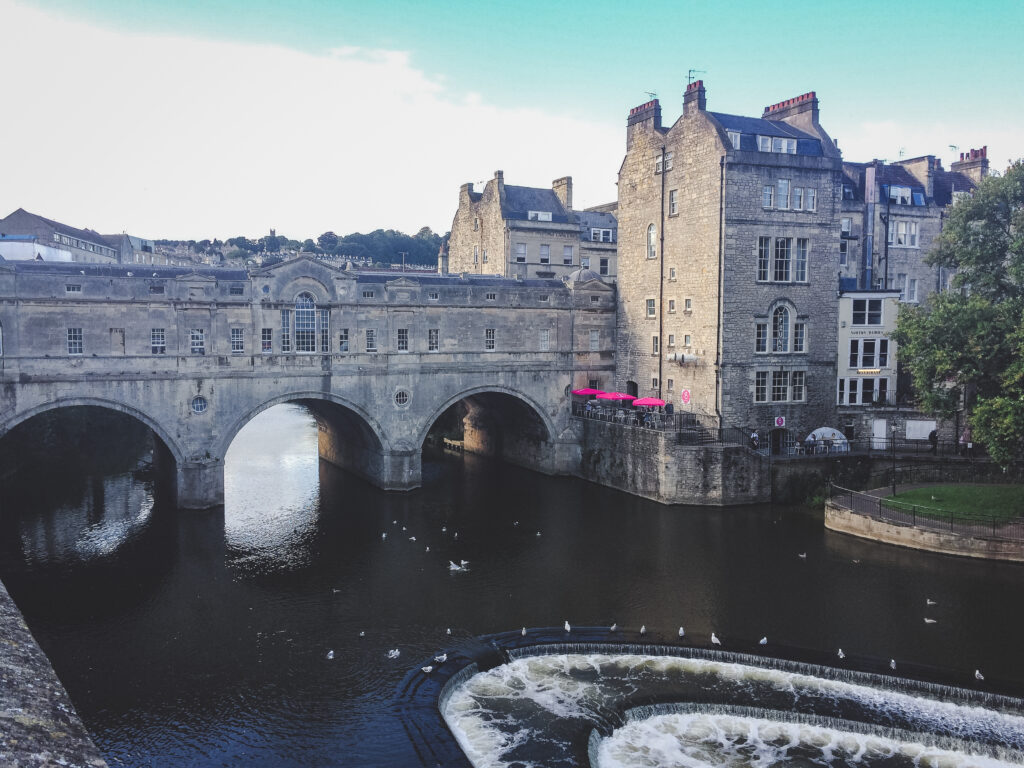
Crossing the Avon, the Pulteney Bridge is the work of the Scottish architect Robert Adam. Dating back to 1774, it’s one of only three bridges in the world lined with shops.
The bridge is named for Frances and William Pulteney, who funded many projects throughout the city. The south facade is the most striking, built from Bath’s signature limestone. Its cascading weir is even featured in Les Miserables in Russell Crowe’s final scene!
Final Thoughts on Bath, England
On the whole, this list covers the necessities for your 24 hours in Bath, England! However, more days could be easily spent exploring the surrounding areas. What are your favourite places to visit in Bath? So whether it’s somewhere new or a cafe you love, share your tips to help make sure no one misses any of the highlights that the city has to offer!
Kelly xo


